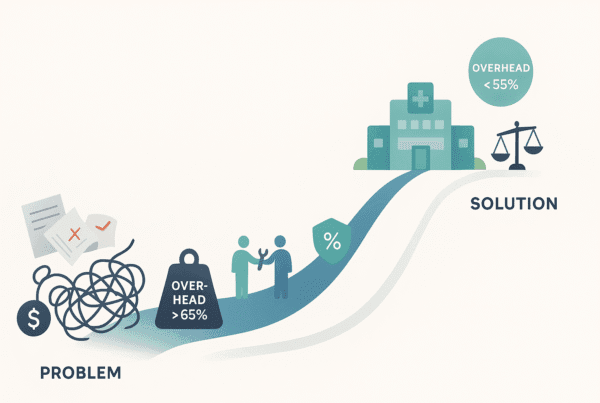Selling your Assisted Living Facility is a significant decision. For owners in the St. Louis area, understanding the local market dynamics, valuation factors, and the steps involved in a sale is the first move toward a successful transition. This guide provides a clear overview of current market opportunities and the key considerations you should be aware of as you explore your options. It’s about turning your hard work into a rewarding outcome.
Market Overview
The St. Louis market presents a strong environment for Assisted Living Facility (ALF) owners. Locally, the demand for quality care is robust. The average monthly cost for assisted living in St. Louis often trends higher than the Missouri state average, signaling a healthy revenue potential for well-run facilities.
This local strength is supported by a powerful national trend. The number of assisted living residents in the U.S. is projected to more than double by 2040. For owners, this combination of strong local demand and long-term demographic tailwinds means your asset is highly relevant to a growing pool of potential buyers. The current climate suggests that a well-positioned facility in St. Louis is a valuable asset in a thriving sector.
Key Considerations
When preparing your St. Louis ALF for sale, sophisticated buyers will look beyond the surface. They assess risk and quality based on several specific factors. Getting these details right before you enter the market can significantly impact your final outcome.
Navigating State Regulations
Your facility s compliance record is non-negotiable. Buyers will perform deep diligence on your adherence to Missouri Department of Health and Senior Services (DHSS) rules, specifically standards like 19 CSR 30-86.047. They will review your licensing history, inspection reports, and any past citations. A clean and well-documented compliance history is a major asset.
Operational Health and Staffing
A successful facility runs on more than just occupancy. While a rate of 85-90% is a strong benchmark, buyers also want to see stable, quality staffing. They will analyze staff tenure, training records, and resident-to-staff ratios. A loyal, experienced team reduces operational risk for a new owner and adds significant value.
Facility and Financial Readiness
The physical state of your facility, including its ADA compliance, recent renovations, and maintenance logs, will be closely inspected. Just as important are your financial records. Buyers expect clean, clear financial statements that accurately reflect the facility’s profitability. This is not the time for messy books.
Market Activity
You are not operating in a vacuum. The market for healthcare facilities in the St. Louis metropolitan area is active. We are seeing a consistent flow of transactions, which indicates healthy interest from both strategic buyers and private investment groups.
For example, a recent sale of a skilled nursing facility in nearby Saint Peters, MO, closed at a value of nearly $63,000 per bed. While every facility is unique, transactions like this demonstrate that buyers are willing to pay competitive prices for well-managed operations in this region. This activity creates a favorable environment for owners who are prepared to enter the market. The key is not just finding a buyer, but running a process that attracts the right kind of buyer, one who sees the full potential of your facility and is willing to value it accordingly.
The Sale Process
A successful sale doesn’t happen by accident. It follows a structured, confidential process designed to protect your interests and maximize value. While it may seem daunting, breaking it down into stages makes it manageable. We believe in running a professional process, not just listing a practice.
- Valuation and Strategy. The process begins with a deep understanding of what your facility is worth and what you want to achieve. This involves a thorough financial analysis and setting clear goals for the transition.
- Confidential Marketing. Your facility is marketed discreetly to a curated list of qualified buyers. This is done without revealing your identity, protecting your relationships with staff, residents, and the community until the right partner is engaged.
- Navigating Due Diligence. This is where many deals face turbulence. The buyer and their lenders will conduct an exhaustive review of your financials, operations, and compliance records. Being prepared for this stage is critical to keeping the transaction on track.
- Negotiation and Closing. The final step involves negotiating the definitive agreements and managing the complex details to get the deal across the finish line.
Understanding Your Facility’s Valuation
How much is your Assisted Living Facility worth? The answer is more complex than a simple formula. While buyers may look at comparable sales, the true value is most often tied to your facility’s profitability and the quality of its cash flow. The key metric used by sophisticated buyers is Adjusted EBITDA (Earnings Before Interest, Taxes, Depreciation, and Amortization). This figure normalizes your profit by adding back owner-specific or one-time expenses to show the true earning potential for a new owner.
From there, a valuation multiple is applied. This multiple is not fixed. It changes based on a range of factors that speak to the quality and risk of your operation.
| Factor | Impact on Valuation Multiple | Why it Matters |
|---|---|---|
| High Occupancy (>90%) | Increases Multiple | Demonstrates strong demand and stable revenue. |
| Reliance on Owner | Decreases Multiple | Buyers see risk if the business depends on one person. |
| Documented Growth | Increases Multiple | A history of growth suggests future potential. |
| Deferred Maintenance | Decreases Multiple | New owner must invest capital to fix issues. |
Post-Sale Considerations
The moment the deal closes is a beginning, not just an end. A successful transition is one where you have a clear plan for what comes next, both for yourself and for the facility you built. Thinking through these issues ahead of time is critical to structuring a deal that meets your long-term goals.
Structuring Your Financial Future
Your proceeds are rarely delivered as a single check. Deals often include structures like an earnout, where you receive additional payments if the facility hits certain performance targets post-sale. You might also consider an equity rollover, where you retain a minority stake in the new, larger company. This provides a potential “second bite at the apple” but requires careful planning.
Defining Your Legacy
For many owners, the sale is about more than money. It is about ensuring the residents continue to receive excellent care and that your dedicated staff are treated well. These priorities can be built into the negotiation process. Finding a buyer whose values align with yours is a key part of protecting the culture and legacy you created.
Planning Your Transition
What will your role be after the sale? Some owners want a clean break, while others prefer to stay on for a defined period to help ensure a smooth transition. Deciding what you want your involvement to look like is a personal choice. It is an important part of the conversation with potential buyers.
Frequently Asked Questions
What is the current market outlook for selling Assisted Living Facilities in St. Louis, MO?
The St. Louis market offers a strong environment for selling Assisted Living Facilities due to robust local demand and higher-than-average monthly costs for assisted living. Nationally, the number of assisted living residents is expected to more than double by 2040, making your facility a valuable asset for a growing pool of buyers.
What are the key factors buyers consider when evaluating an Assisted Living Facility for purchase in St. Louis?
Buyers focus on several factors including compliance with Missouri DHSS regulations, operational health like occupancy rates (85-90% is a strong benchmark), stable and trained staffing, the physical condition of the facility including ADA compliance, and clear, accurate financial records.
How is the valuation of an Assisted Living Facility typically determined in St. Louis?
Valuation is based primarily on profitability and quality of cash flow, measured by Adjusted EBITDA. A valuation multiple is applied that depends on factors like occupancy rates, reliance on the owner, documented growth, and the level of deferred maintenance.
What steps are involved in the process of selling an Assisted Living Facility in St. Louis?
The sale process includes: 1) Valuation and strategy setting; 2) Confidential marketing to qualified buyers; 3) Navigating due diligence where financial, operational, and compliance records are reviewed; 4) Negotiation and closing of the sale.
What should owners consider about their involvement and financial future post-sale?
Owners should plan their transition roles—whether a clean break or staying on temporarily—as well as financial structures like earnouts or equity rollovers. Ensuring the care quality and staff treatment continues is important, and selecting a buyer aligned with your values is key to protecting your legacy.



